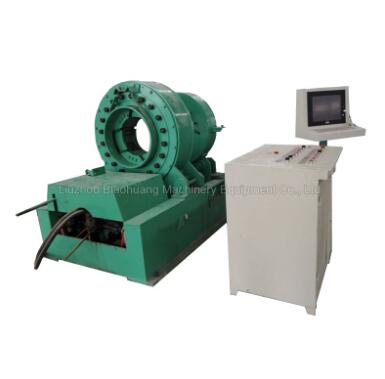What factors should consider when choosing the right bucking machine?
Choosing the right bucking machine, also known as a bucking unit or bucking tool, is crucial for efficient and safe operations in the oil and gas industry. Several factors should be considered when selecting the most suitable bucking machine for specific applications. Here are the key factors to keep in mind:
1. Tubular Size and Range: Consider the sizes and types of oilfield tubulars commonly used in your operations. Ensure that the bucking machine can handle the full range of tubular sizes and premium connections required for your drilling or well completion projects.
2. Torque Capacity: Determine the required torque capacity of the bucking machine based on the maximum torque needed for the largest tubulars in your operation. The bucking machine should be able to provide sufficient torque to safely and accurately make up and break out the connections.
3. Connection Types: Different premium connections have specific thread profiles and makeup/breakout requirements. Ensure that the bucking machine is compatible with the premium connection types commonly used in your operations.
4. Safety Features: Look for safety features and mechanisms that protect operators and equipment during bucking operations. This may include safety interlocks, emergency stop buttons, and protective enclosures to prevent accidents and injuries.
5. Automation and Control System: Consider the level of automation and control offered by the bucking machine. Some machines come with advanced control systems that allow for precise torque application, real-time monitoring, and data recording for quality assurance.
6. Portability and Mobility: Evaluate the portability and mobility of the bucking machine, especially if it needs to be moved to different well sites. Some models are designed to be easily transported and set up, while others may require more extensive installation.
7. Environmental Considerations: Assess the suitability of the pipe bucking machine for the environmental conditions where it will be operated. This includes temperature ranges, humidity, and potential exposure to harsh elements in offshore or remote locations.
8. Maintenance and Serviceability: Choose a bucking machine that is easy to maintain and service. Accessible components and straightforward maintenance procedures can minimize downtime and increase overall productivity.
9. Training and Support: Consider the availability of training and technical support for the bucking machine. Proper operator training is essential for safe and efficient operations, and reliable technical support can help address any issues or questions that may arise.
10. Cost and Return on Investment: Compare the cost of the bucking machine with its features and capabilities. Evaluate the potential return on investment based on increased efficiency, reduced downtime, and improved well integrity.
11. Industry Reputation: Consider the reputation and track record of the manufacturer or supplier. Choose a reputable company known for producing reliable and high-quality bucking machines.
By carefully considering these factors, you can select the right bucking machine that meets the specific needs and requirements of your oil and gas operations, ensuring safe, efficient, and successful well drilling and completion processes.
206
0
0
All Comments (0)
If you are interested in sending in a Guest Blogger Submission,welcome to write for us!





Comments